Imagine a clear Montana night sky, unobstructed by city lights, adorned with twinkling stars. Have you contemplated how you can best explore and embrace the enchanting canvas drawn by nature as the sun sets over Big Sky Country?
For outdoor enthusiasts, couples seeking a romantic escape, or families craving unique bonding experiences, Montana’s natural wonders extend well beyond daylight.
These spots not only bring you up close to the state’s unparalleled natural beauty but also provide a glimpse into its untouched nocturnal life. Prepare to embark on a virtual journey across 17 enchanting spots, curated to amplify the Montana night charm.
- Related article: Discover Montana’s Natural Attractions
Explore diverse nighttime experiences under Montana’s celestial ceiling, from stargazing in Glacier Park and moonlit hikes in Yellowstone to discovering minimalist charm in Billings. Stay with us as we unveil the captivating wonders of Montana’s night.
7 Key Takeaways on Montana Night Sky
- Avalanche Lake, nestled in Glacier National Park, earns its nickname “The Starry Serenade” as a certified International Dark Sky Park. Its cinematic setting reflects a star-studded sky in tranquil waters, offering an ideal spot for serene stargazing.
- Apgar Lookout, part of Glacier National Park, stands as a legendary spot for crystal-clear stargazing. Ranger-led programs and minimal light pollution enhance the celestial experience, with the chance to witness the northern lights during specific times.
- The Dusty Star Dome within Glacier National Park features a 20-inch PlaneWave telescope, making it a stargazer’s dream. Community star parties, led by park rangers, add an educational and enchanting touch to the celestial experience.
- Blue Mountain Observatory, located at 6,300 feet in Lolo, Montana, offers unobstructed views with minimal light pollution. Summer Public Shows, featuring expert astronomers, transform stargazing into an immersive experience.
- Mount Sentinel in Missoula isn’t just for daytime hikes. The M Trail offers a front-row seat to celestial wonders, making it a favorite for stargazing enthusiasts. Safety measures and optimal time slots provide a serene night under Montana’s dark skies.
- Hyalite Canyon, beyond Bozeman, stands as a moonlit spotlight for stargazing. With minimal light pollution, it offers a community atmosphere during stargazing sessions and a captivating camping experience.
- Yellowstone National Park, known for geysers, is also a prime stargazing spot. Renowned for its remote setting and clear night skies, Yellowstone provides unimpeded views of celestial wonders, making it a must-visit destination for stargazers.
17 Must-See Places at Night in Montana
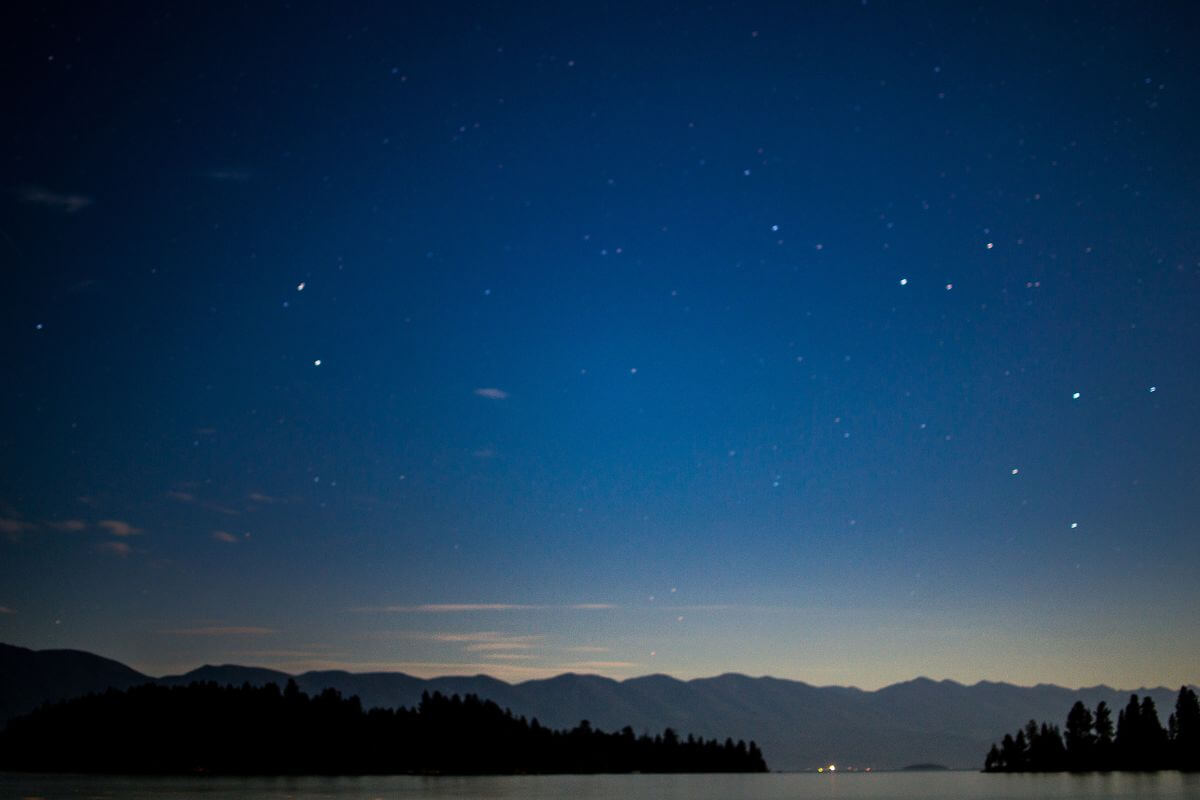
Imagine Montana when the sun dips below the horizon, and embers of twilight blend seamlessly into the velvety night skies. It’s a time when the magic whispers across the state, calling you to explore a side of Montana that’s uniquely nocturnal.
From lively city streets to open wilderness, here’s a list of 17 places to let Montana’s nighttime enchantment surround you.
1. Avalanche Lake
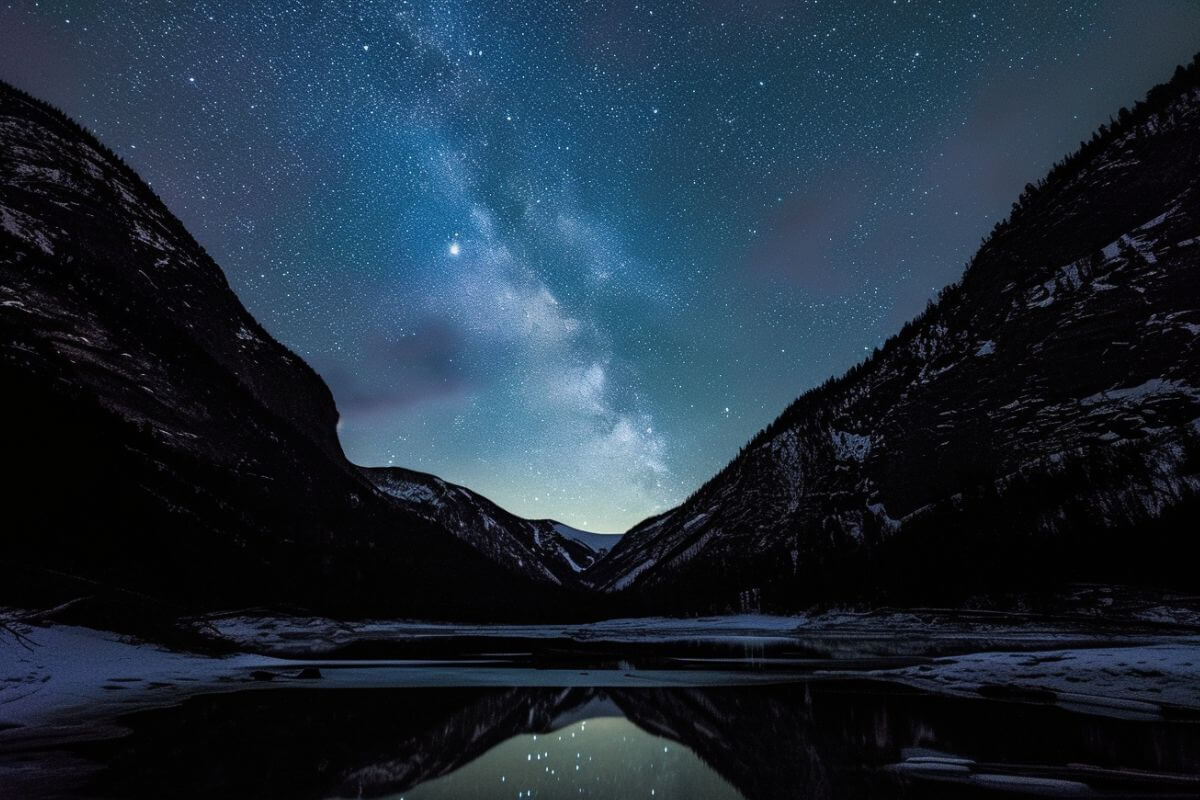
Nicknamed “The Starry Serenade,” Avalanche Lake is a celestial haven nestled within the majestic confines of Glacier National Park. This natural wonder has earned its status as a certified International Dark Sky Park, ensuring an unparalleled experience for avid stargazers.
The park’s commitment to minimizing light pollution creates an ideal environment for undisturbed stargazing and night sky photography.
Glacier National Park’s dedication to preserving the night sky guarantees clear views of the stars, and during the colder months, fortunate visitors may even witness the mesmerizing display of the Northern Lights, adding vibrant hues to the celestial canvas.
The setting is nothing short of cinematic, as Avalanche Lake reflects a star-studded sky in its tranquil waters, with the silhouettes of mountain peaks creating a captivating backdrop for the evening spectacle.
Avalanche Lake is not just a destination for the night owls; it welcomes visitors 24/7, allowing them to choose their own serene stargazing time. The park also frequently organizes stargazing events, minimizing artificial lights to highlight the natural brilliance of the night sky.
For shutterbugs, Avalanche Lake’s designation as an International Dark Sky Park makes it an ideal spot, offering exceptional conditions for capturing the beauty of the night sky in a way rarely found in other parts of the United States.
Pro Tips for Avalanche Lake Stargazing:
- For those insistent on catching the Northern Lights, the statistically more favorable season is between November and March. Remember, clear skies and a bit of luck are essential for this celestial dance.
- As nighttime temps can dip unexpectedly, especially in the high altitudes around Avalanche Lake, always pack extra layers.
- While the park is keen on preservation and minimal human disturbances, LED headlamps are game-changers, allowing you to find your way without upsetting fellow stargazers.
2. Apgar Lookout
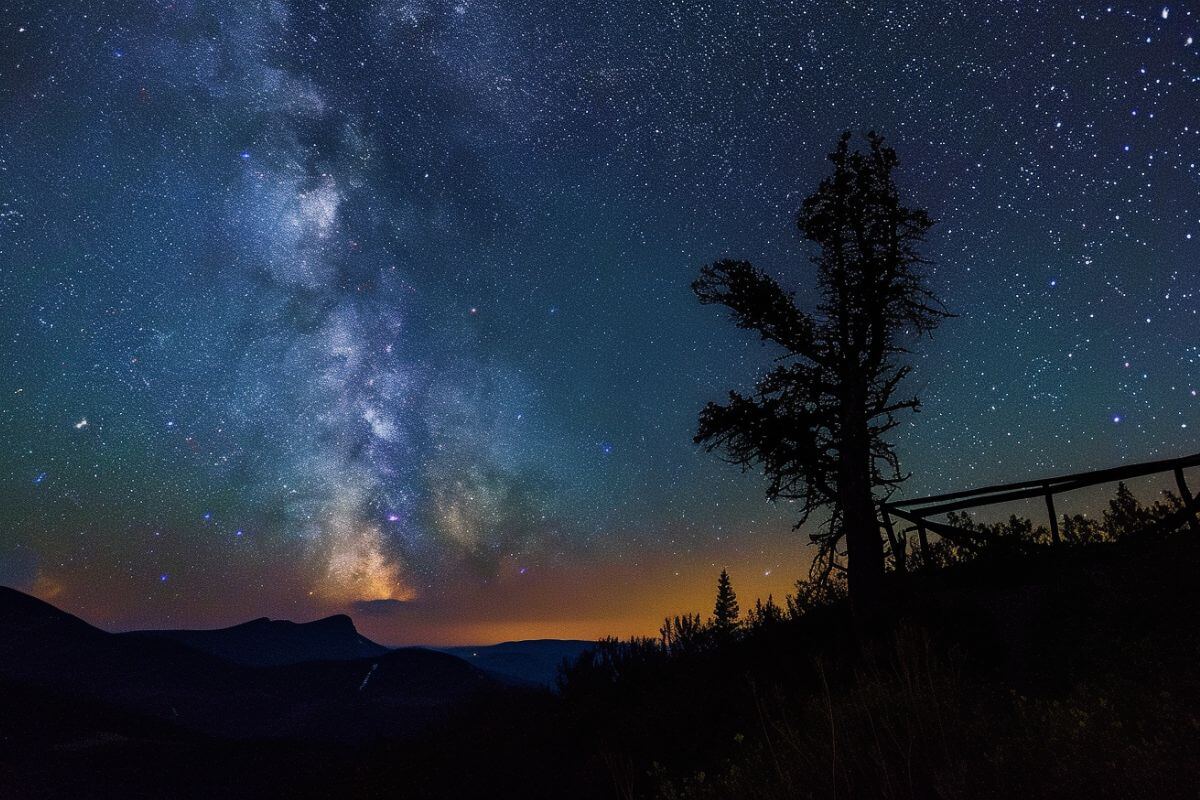
Apgar Lookout in Glacier National Park stands as the next stop to elevate your stargazing experience. As part of Glacier National Park, this unspoiled night-time spot is legendary for delivering crystal-clear views of the cosmos, untainted by urban light pollution.
- Location – Apgar Lookout, at an elevation of 3,200 feet (around 975 m), offers one of the most unimpeded panoramic views in the park.
- Best Time to Visit – Summer months, from July to early September, ensure optimal weather conditions.
Glacier National Park offers ranger-led stargazing programs for an educational and enchanting night out, complemented by the option for visitors to bring their telescopes for a more intimate experience.
The park’s remote location and minimal light pollution enhance the visibility of the stars, and during specific times, Apgar Lookout provides a rare glimpse of the northern lights, adding an extra layer of enchantment to the celestial show.
For a more in-depth celestial experience, aim for one of the ranger-led stargazing programs. Don’t forget to bring a jacket, as it gets pretty chilly when the sun goes down.
This sky-high adventure ticks all the boxes, allowing you to become one with the night sky. If you have the luxury of time, a couple of nights at Apgar Lookout will fuel the inner astronomer in anyone.
3. Dusty Star Dome
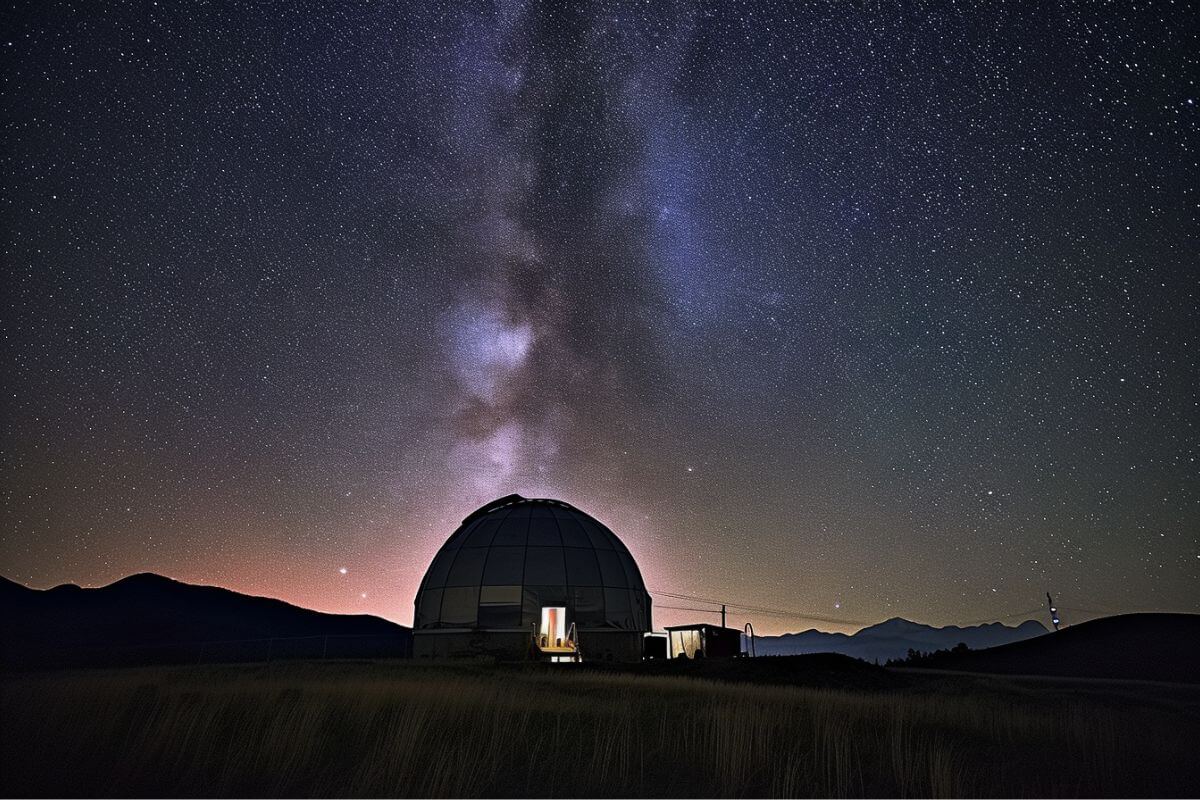
The Dusty Star Dome may sound like the backdrop of a cowboy romance, but in real life, it’s the epicenter of celestial romance at Glacier National Park.
Nestled within the iconic St. Mary Visitor Center, this gem features a 20-inch PlaneWave telescope – a stargazer’s dream machine – perfect for your dose of high-resolution night sky peeping.
As if that weren’t enough, Glacier National Park, where the Star Dome twinkles, is an International Dark Sky Park. Think of it as your premium seat in the cosmic theater, offering minimal light pollution and prime conditions to witness the Milky Way, the northern lights, and other celestial superstars.
The observatory isn’t just a glorified star-viewing platform; it’s a community. Throughout the stargazing season, you can expect to rub elbows with like-minded astronomer enthusiasts at the star parties hosted within the Dome.
But here’s what sets Dusty Star Dome apart: it’s not just about the views. Park rangers often lead these star parties, infusing each session with educational insights, historical anecdotes, and a genuine sense of wonder.
With a promise of impeccable views and enriching experiences, Dusty Star Dome is a top-ticket destination for anyone who’s ever looked upward and let out a “wow.”
4. Blue Mountain Observatory
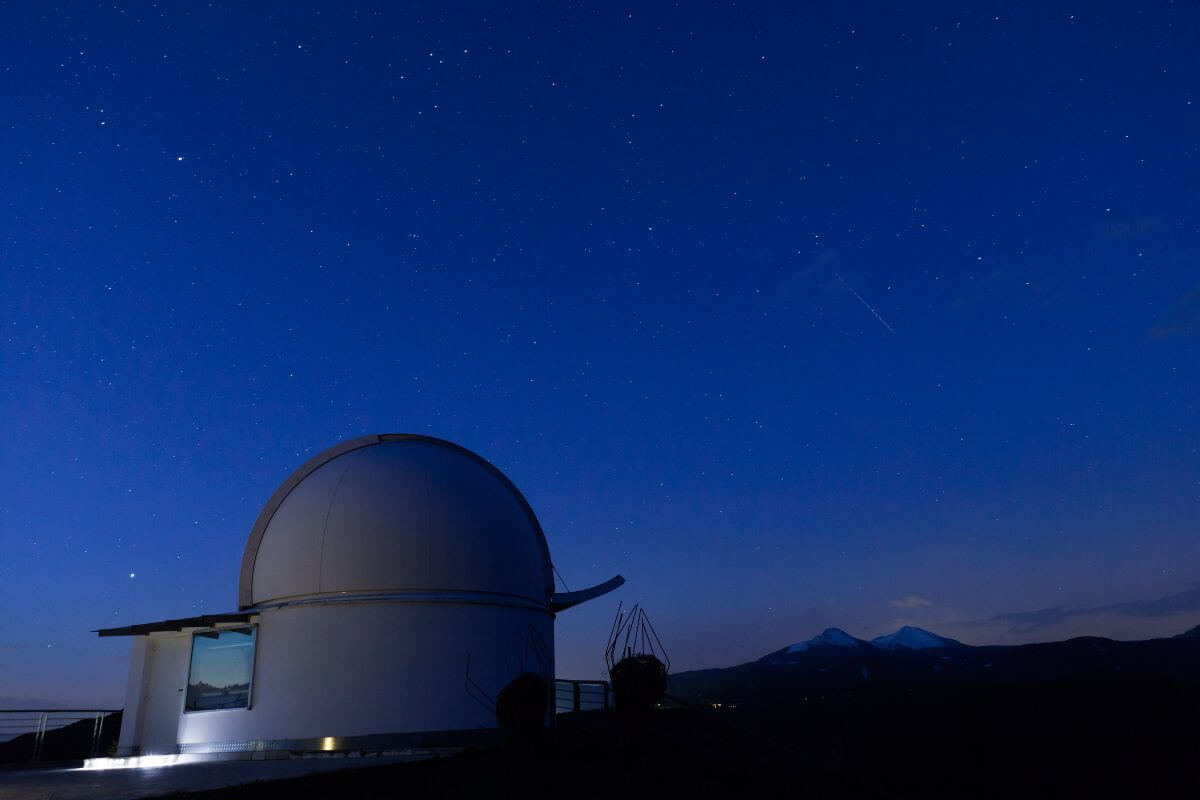
At an elevation of 6,300 feet (around 1,920 m) in Lolo, Montana, a sublime stargazing experience awaits at the Blue Mountain Observatory.
This spot takes “getting closer to the stars” quite literally, offering unobstructed views with minimal light pollution. Think of it as Mother Nature’s very own planetarium, making it perfect for anyone who’s a ‘star’ in their own right or searching for something novel to do.
Summer Public Shows are a big deal here, often featuring expert astronomers from the University of Montana and local stargazing buffs from the Western Montana Astronomical Association. Here, you can marvel at celestial objects through various telescopes, including the observatory’s prized 16-inch lens.
Celebrated by enthusiasts and curious visitors alike, these educational and interactive nights under the stars are peak experiences. The experts here transform stargazing into an immersive experience, unlike anything you’d find in a standard planetarium.
So, whether it’s a date night with a cosmic twist or an outing with the family that’s guaranteed to leave you starry-eyed, the Blue Mountain Observatory stands as a must on any Montana night excursion list.
5. Mount Sentinel
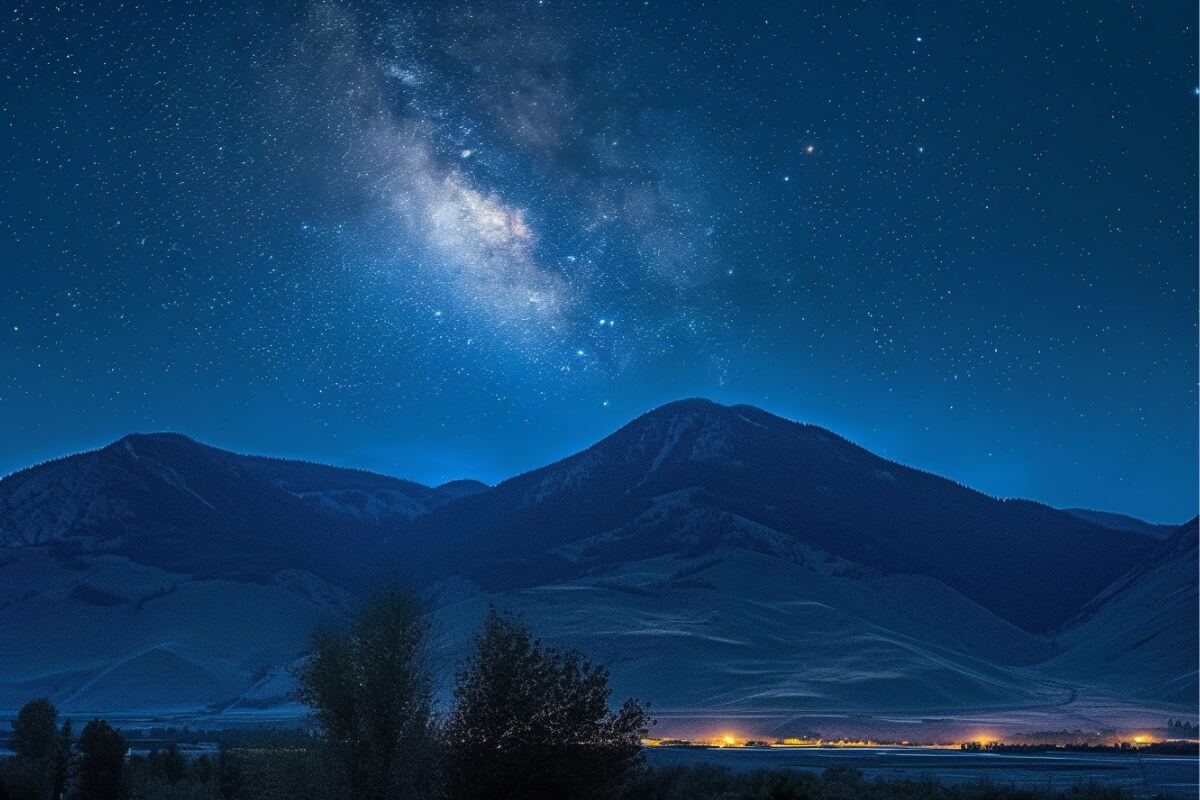
Mount Sentinel in Missoula, Montana, isn’t just for daytime hikes. With its high vantage point and clear sight views, it’s an ideal spot to immerse yourself under a blanket of stars.
The M Trail, which scales the mountainside, offers a front-row seat to celestial wonders, making it a favorite among stargazing aficionados and romantics alike. Montana’s minimal light pollution enhances the brilliance of the night sky, reminiscent of an artist’s canvas come alive – the catch: the artist is nature itself.
Tips for your Mount Sentinel night adventure:
- Safety First – While it’s a relatively popular night spot, solo hiking is discouraged for safety reasons.
- Gear Up – Dress in layers as Montana nights can be chilly, and it’s wise to carry a flashlight or headlamp.
- Stargazing Essentials – To take your experience to the next level, consider bringing along a telescope or a pair of binoculars for a closer look at the constellations.
- Respect Nature – Keep the volume down and carry out any trash. Let the sounds of the night and the twinkling stars be your companions.
Embark on a celestial adventure along the M Trail up Mount Sentinel, floodlit for safety. Optimal time slots after sunset and before midnight offer a perfect blend of city lights and starry skies.
If timed right, catch meteor showers for an extra-cosmic spectacle. Whether a seasoned night hiker or a stargazing novice, Mount Sentinel promises a captivating journey into the beauty of the night sky.
Montana’s reputation for dark skies is well-earned, and Mount Sentinel provides a front-row seat to this natural spectacle. Gazing at the stars from this vantage point is a serene experience, a stark contrast to the hustle and bustle of life below.
6. Hyalite Canyon
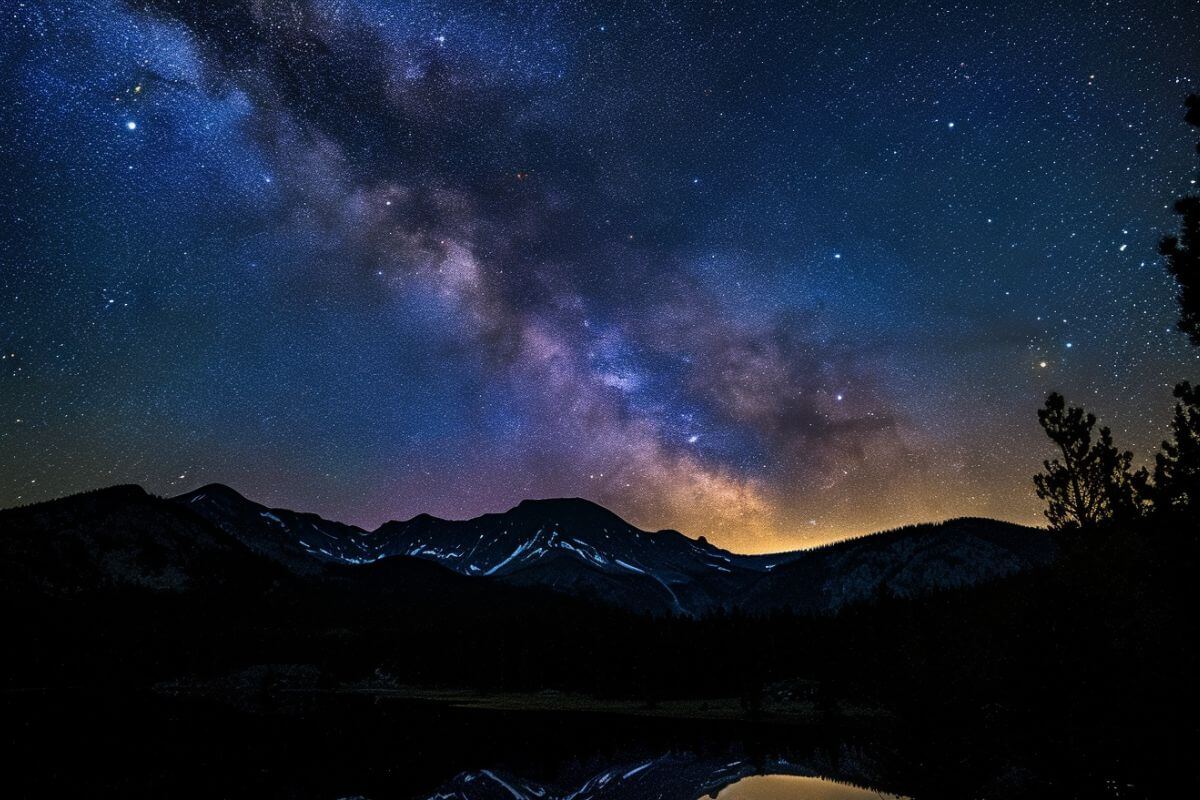
When the city lights fade and the everyday hustle mellows, Hyalite Canyon steps into Montana’s moonlit spotlight. Just beyond Bozeman, this gift of nature provides a secluded canvas for an all-night star show, with minimal light pollution ramping up the visual WOWS.
- Dark Sky, Bright Dreams – The minimal light pollution in Hyalite Canyon makes it an A-lister for astrophotography or just casual sky-gazers. Expect star clusters and an occasional meteor streak on your cosmic stroll.
- Community Star Watch – Locals adore Hyalite for stargazing sessions interwoven with friendly chats. “It’s almost like a community center under the stars, people bringing telescopes, stories, and a whole lot of warmth,” a Bozeman resident smiles.
- All-Nighter Camping – While the day-visitor stargazing experience is top-notch, setting up camp here is an elevating experience. “The stars shine brighter as the night deepens, creating an intimately personal celestial display just for you,” a frequent Hyalite camper shares.
If you’re new to stargazing, consider visiting during a local star party or attend Hyalite’s Astronomy Festival for expert-led experiences. For a light-free, uninterrupted experience, head out on weekdays when visitor numbers are lower.
Trust us, when you’re sprawled on an open Hyalite expanse, the city gridlines a mere memory, every star is an old friend, glinting at you with untold stories.
7. Yellowstone National Park
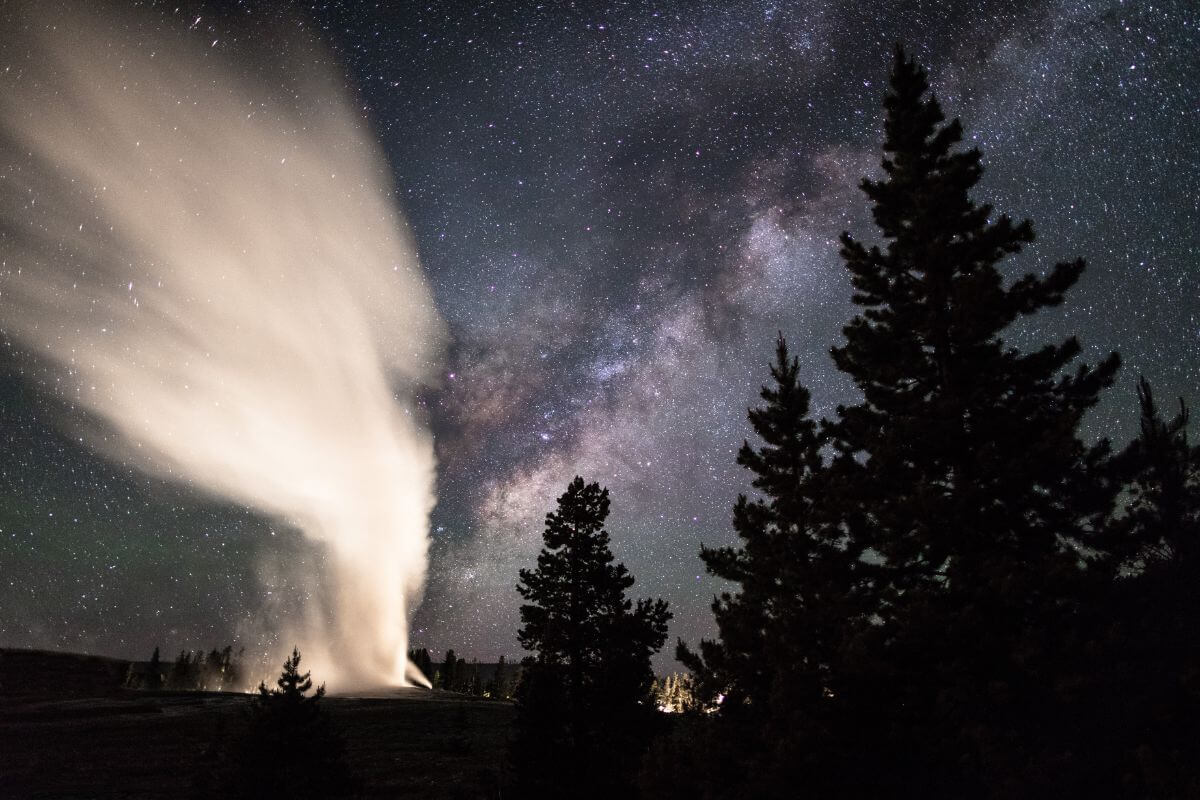
Yellowstone National Park, stretching across parts of Wyoming, Idaho, and Montana, isn’t just famous for its geysers and hot springs; it’s also a prime spot for remarkable stargazing.
Renowned as the world’s first national park, Yellowstone’s remote setting and vast, unobstructed vistas create an ideal backdrop for those who crave the cosmic show.
Key tips for stargazing in Yellowstone National Park:
- Best Time – Plan your stargazing adventures between April and October for the most comfortable temperatures and clear night skies.
- Top Spots – Head to iconic locations like Dunraven Pass and Firehole Lake Drive for unimpeded views of the heavens.
- Camping Delights – Don’t miss the opportunity to camp at popular sites like Fishing Bridge, Madison, or Slough Creek campgrounds, where you’re virtually guaranteed stunning nightscapes.
- Prepare Right – Dress in warm layers, bring a comfortable chair or blanket, and don’t forget your binoculars or telescope.
Yellowstone’s sky hardly knows the glow of light pollution and is a sanctuary for celestial enthusiasts.
8. Lewis and Clark Interpretive Center
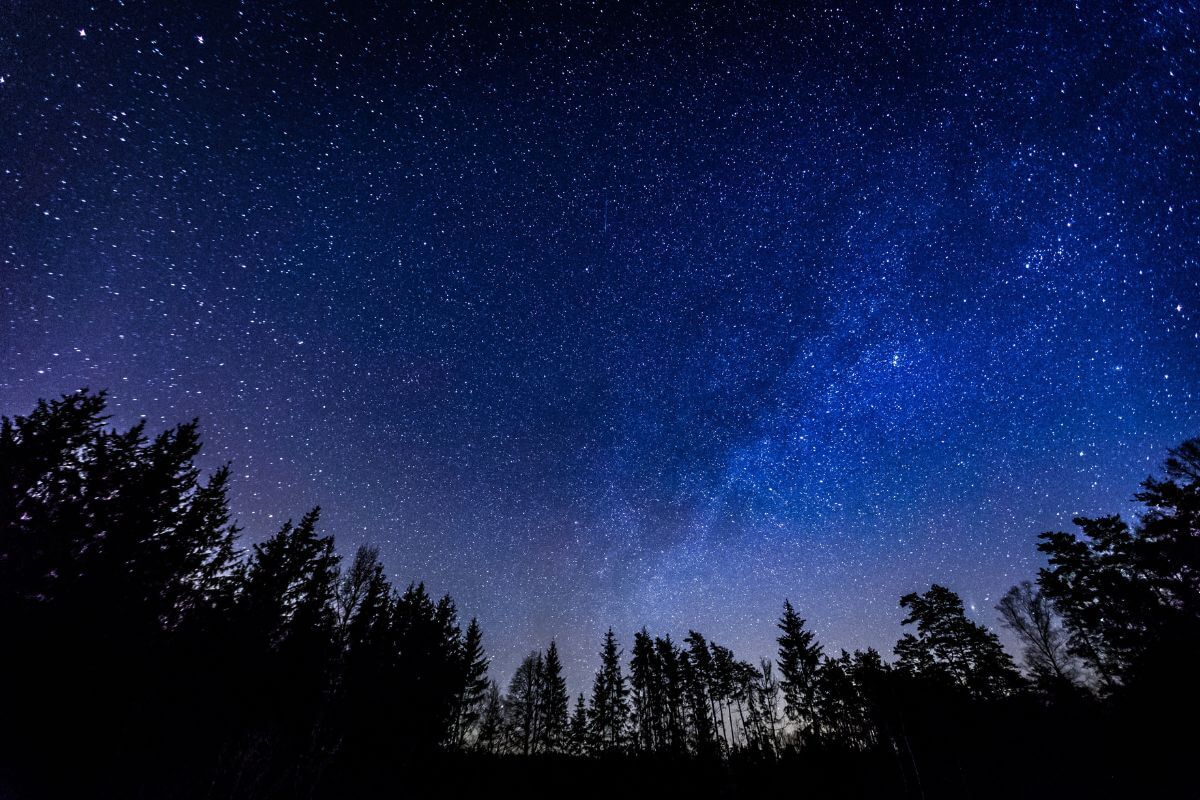
Lewis and Clark Interpretive Center: Celestial Adventures in Great Falls
Fulfill your dreams as an armchair astronomer at the Lewis and Clark Interpretive Center. Tucked within Giant Springs Heritage State Park in Great Falls, Montana, this gem is your portal to the universe, courtesy of the Central Montana Astronomy Society’s mesmerizing Star Parties.
Operating Hours:
- Summer Season – Memorial Day Weekend through Labor Day Weekend: Open daily from 9 a.m. to 5 p.m.
- Winter Season – Following Labor Day weekend until Memorial Day Weekend: Open Tuesday -Saturday from 9 a.m. to 5 p.m. and Sunday from 12:00 p.m. to 5:00 p.m. Closed on Mondays. Also closed on Thanksgiving, Christmas, and New Year’s Day.
During these gatherings, equipped with telescopes and a team of stargazing aficionados, you’re taken on an educational journey to view celestial objects in a whole new light – or lack thereof.
Each Star Party provides an immersive experience, allowing attendees to see the wonders of the universe with enhanced clarity and detail.
9. American Prairie Reserve
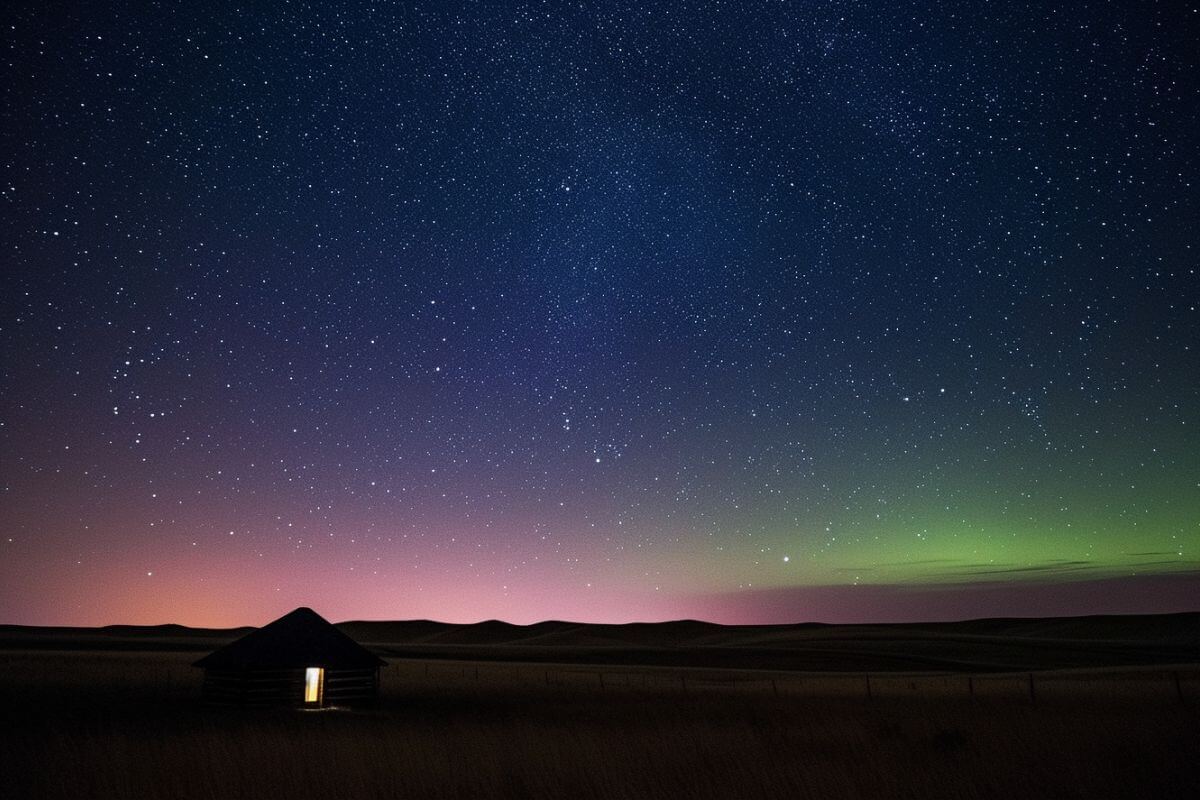
When it comes to stargazing in Montana, the American Prairie Reserve can’t be beaten. Located in Malta, MT 59538, USA, this vast, remote area offers exceptional stargazing opportunities due to the lack of development and minimal light pollution.
The reserve’s secluded setting and expansive, wide-open spaces create an optimal environment for stargazing. As someone who has always been mesmerized by the night sky, I can attest that the American Prairie Reserve is a must-visit destination for anyone seeking a truly breathtaking stargazing experience.
The sheer expanse of the Northern Great Plains offers a sense of isolation and tranquility that allows for an unparalleled opportunity to gaze at the stars in all their brilliance.
As more and more travelers rediscover the allure of the natural nighttime canvas, places like the American Prairie Reserve are in the spotlight, offering a different kind of magic that only a truly dark night sky can provide.
10. Haystack Butte Trails
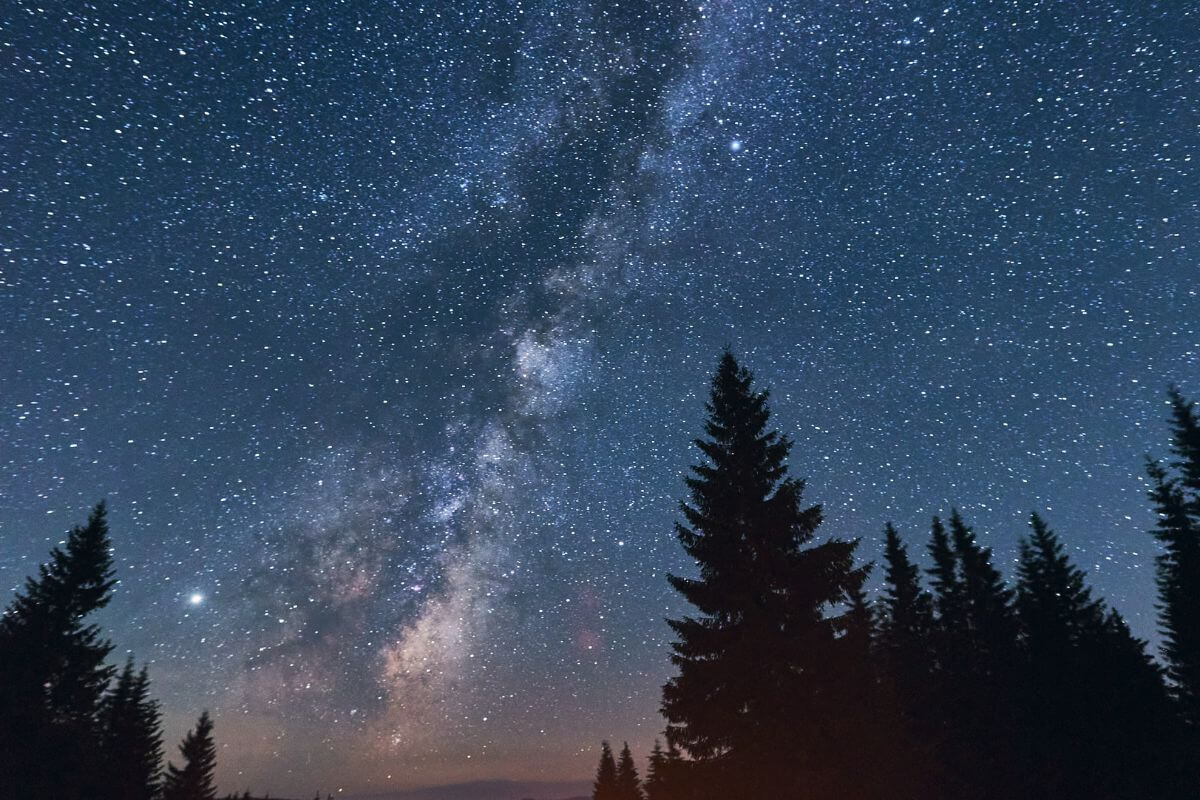
I recently discovered the hidden gem of Yellowstone National Park – the Haystack Butte Trails – and let me tell you, it’s a stargazing paradise. Situated in the heart of the park, this location is renowned for its exceptional stargazing opportunities due to the lack of light pollution.
Yellowstone National Park also hosts ranger-led stargazing programs and evening astronomy walks, offering educational and immersive experiences for visitors. These programs provide the opportunity to view celestial objects through telescopes, enhancing the overall stargazing experience.
The park’s popular stargazing spots, including Dunraven Pass, Firehole Lake Drive, and various campgrounds, offer unobstructed views of the night sky, making it a must-visit destination for anyone seeking an unforgettable stargazing adventure in Montana.
If you want to experience the best of Haystack Butte Trails and Yellowstone’s stunning night skies, the best time to go stargazing is during the spring and fall months, between April and October. This extended period allows visitors to truly appreciate the beauty of the park’s celestial wonders.
11. Riverfront Park
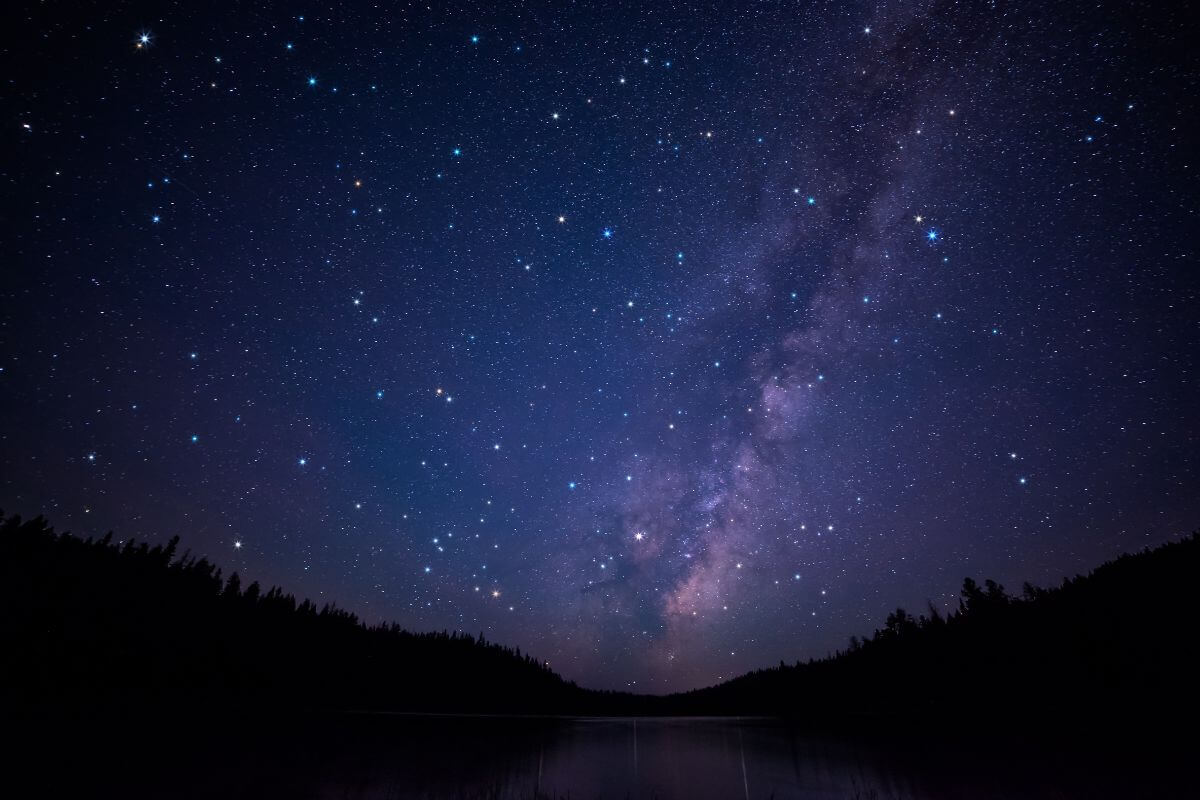
Riverfront Park is Billings’ hidden gem, nestled alongside the Yellowstone River. It’s a stargazer’s paradise, offering exceptional opportunities to marvel at the cosmos with minimal light interference. If you’re taking the State Secondary Hwy 416, you’re quite literally on the path to stargazing wonder.
Local astronomy clubs often set up telescopes here, inviting enthusiasts to dive deeper into the night sky. This park offers a convenient escape from the city’s bright lights.
The Riverfront Park’s allure isn’t just its natural beauty. It’s the city’s veritable front-row seat to the celestial show. This isn’t just another green space — it’s a portal to the cosmos.
Why Go:
- Unobstructed Views – Its layout minimizes light pollution, creating a favorable setting for stargazing and astrophotography.
- Centrally Located – Situated in downtown Billings, it’s easily accessible for both locals and tourists.
- Romantic Stroll – Even if stargazing isn’t your primary goal, the park’s riverside paths make it an ideal spot for a moonlit walk.
- Free to Explore – Unlike some stargazing spots that charge admission, Riverfront Park offers this otherworldly experience for free.
The park’s strategic location by the river is not just picturesque, but it also serves a functional purpose – as a natural barrier to the city’s bright lights, making it an unmissable spot for any night owl with a penchant for pondering the heavens.
12. Pictograph Cave State Park
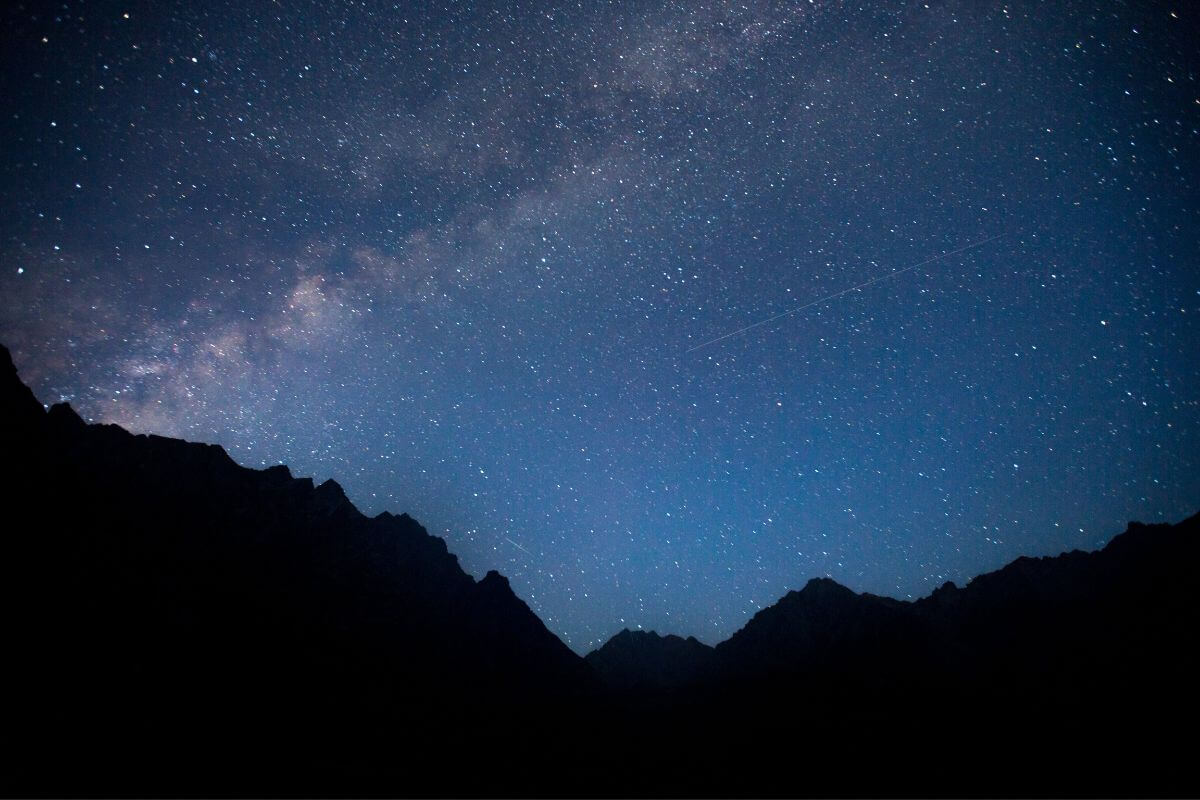
When it comes to stargazing in Montana, Pictograph Cave State Park is a hidden gem that shouldn’t be missed. Tucked away in a remote area with minimal light pollution, this park offers an ideal environment for stargazing, providing a full panoramic view of the night sky.
Known for preserving the vestiges of cultures, the park’s secluded setting means there are no nearby city lights to obstruct the view, allowing visitors to enjoy a collection of sparkling stars and galaxies spread across Montana’s night sky.
Beyond the mesmerizing stargazing opportunities, Pictograph Cave State Park in Montana beckons visitors with three caves and scenic trails. Explore ancient rock art and hike through picturesque landscapes, adding an extra layer of entertainment to your unforgettable stargazing adventure.
If you desire a retreat from the hustle and bustle of urban life to indulge in the splendor of the night sky, Pictograph Cave State Park emerges as the ideal sanctuary. Prepare your telescope, bring a blanket, and anticipate an unparalleled stargazing encounter within this tranquil and secluded setting.
13. Beartooth Highway
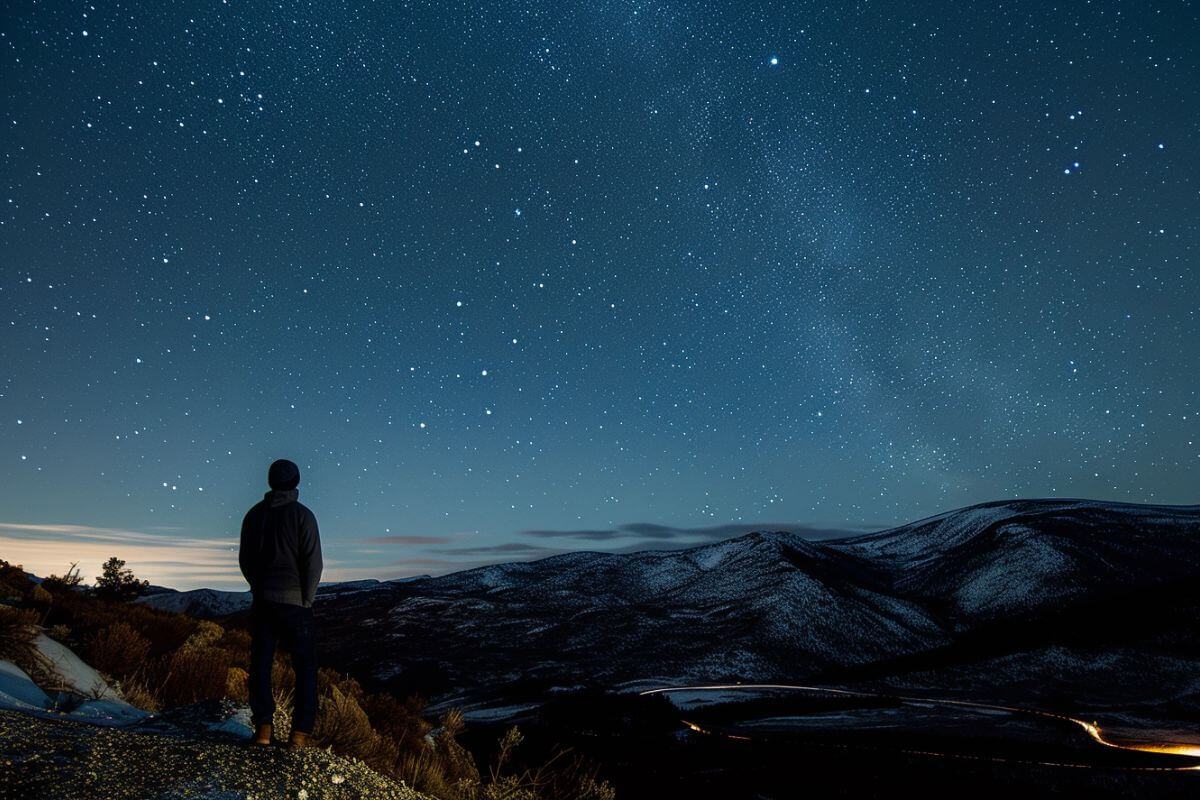
Beartooth Highway Beartooth Highway has more to offer than just scenic day rides. This 68-mile (109.4 km) stretch of highway that snakes through the Beartooth Mountain Range to connect Red Lodge in Montana and Cooke City in Wyoming is celebrated for its star-strewn skies.
Why Beartooth Highway is magical:
- Exceptional Night Sky Views – Far from the city, resulting in minimal light pollution.
- Excellent Elevation – It allows for unobstructed panoramic views of the Milky Way. Campgrounds range from 7,000 to 9,500 feet (2,133.6 to 2,896.3 meters).
- Treeless Landscape – Perfect for an expansive view of the night sky.
Imagine pulling over at a campground like Beartooth Lake or Island Lake where the only chatter you’ll hear is the rustling of leaves, the kind that makes you feel humbled and at peace with your place in the universe.
These campgrounds are strategically perched at elevations that not only offer clear views of the Milky Way but also let you admire shooting stars and, if you’re lucky, even catch a glimpse of the Northern Lights.
But don’t worry, you don’t need to be an astrophysicist or own a high-powered telescope; the naked eye here often suffices. Plus, the early sunsets in the area allow you to start your stargazing journey just after dinner, turning a typical Montana vacation into a sensorial treat.
Here, you’re just a scenic drive away from quiet, mountain-tucked lodging in towns like Cooke City and Red Lodge. Afterward, you could even make a night of it and hunt down a cozy restaurant or sip on a local brew in town; these places may be small, but they’re big on hospitality.
14. Bitterroot Valley
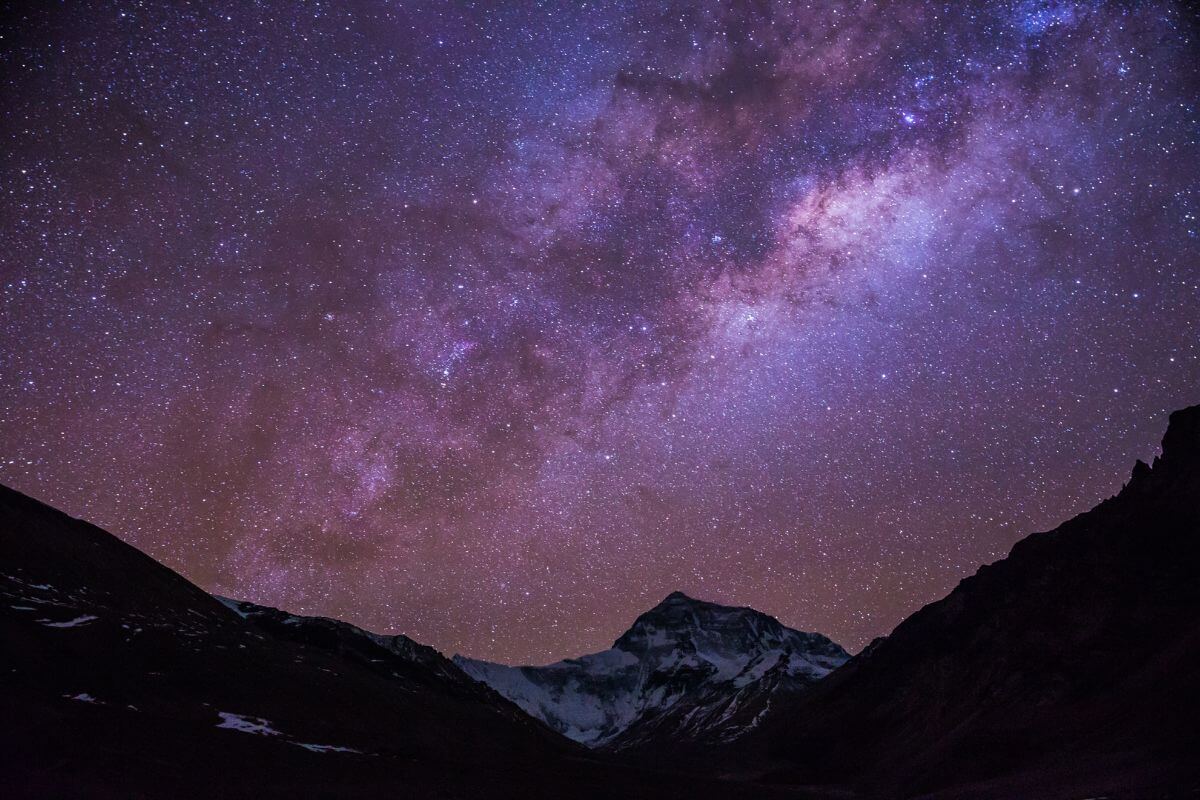
Bitterroot Valley in Montana is a must-visit for stargazing enthusiasts. Nestled between the Bitterroot Range and the Sapphire Mountains, its secluded location offers exceptional stargazing opportunities with minimal light pollution.
The treeless landscape and expansive, wide-open spaces create an optimal environment for stargazing, allowing visitors to marvel at the sparkling night sky in all its glory.
But it’s not just about the stars here – Bitterroot Valley is also famous for offering various recreation opportunities, from hiking and backpacking to steakhouses and breweries.
This makes it an ideal destination for those seeking an unforgettable stargazing adventure in Montana.
If you seek an escape from the busy urban life to fully embrace the allure of the night sky, Bitterroot Valley is your destination of choice. Pack your equipment, venture to this captivating valley, and get ready for a stargazing adventure unlike any other.
15. Brush Lake State Park
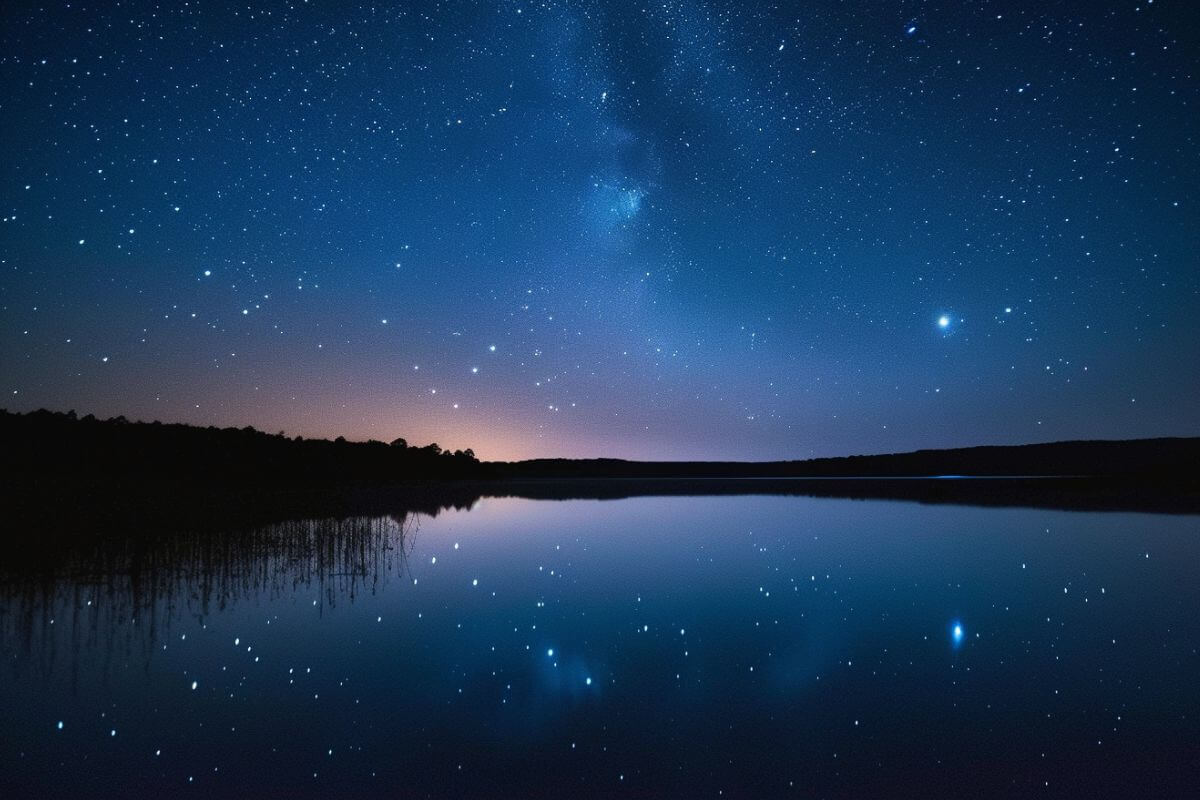
Brush Lake State Park is a bewitching destination for those enchanted by the stars. Nestled in an area known for minimal light pollution, you’re in for a treat of luminously bright night skies that make stargazing an otherworldly experience.
In this void of artificial light, you can quite literally witness the heavens come alive – the Milky Way stretches like an intergalactic ribbon, and meteor showers are met with awe-inspiring gasps that seem to travel as far as the stars themselves.
Why Brush Lake State Park is special for stargazing:
- Located in an area with low light pollution, optimal for stargazing
- Ideal for observing celestial phenomena like the Milky Way and meteor showers
- Reputation as one of Montana’s prime stargazing locales
- Offers camping and lodging, making it convenient for extended stargazing expeditions
For an unforgettable stargazing experience at Brush Lake State Park, bring a comfortable chair or blanket, and consider packing a telescope for enhanced views of planets and galaxies.
Don’t forget warm clothing, even in summer. For an extra special night, schedule your visit during major meteor showers.
Brush Lake State Park boasts convenient camping and lodging options, ensuring that your stargazing adventures don’t end with the night sky. As if the stars weren’t enough, the serenity and quiet of the park under these glittering skies elevate the experience to something almost spiritual.
So, if you’re looking to step into the Montana night and literally touch the stars, Brush Lake State Park is your beckoning call – a place that even amidst an ever-evolving world, remains a steady shrine for the cosmos.
16. Lost Trail Pass
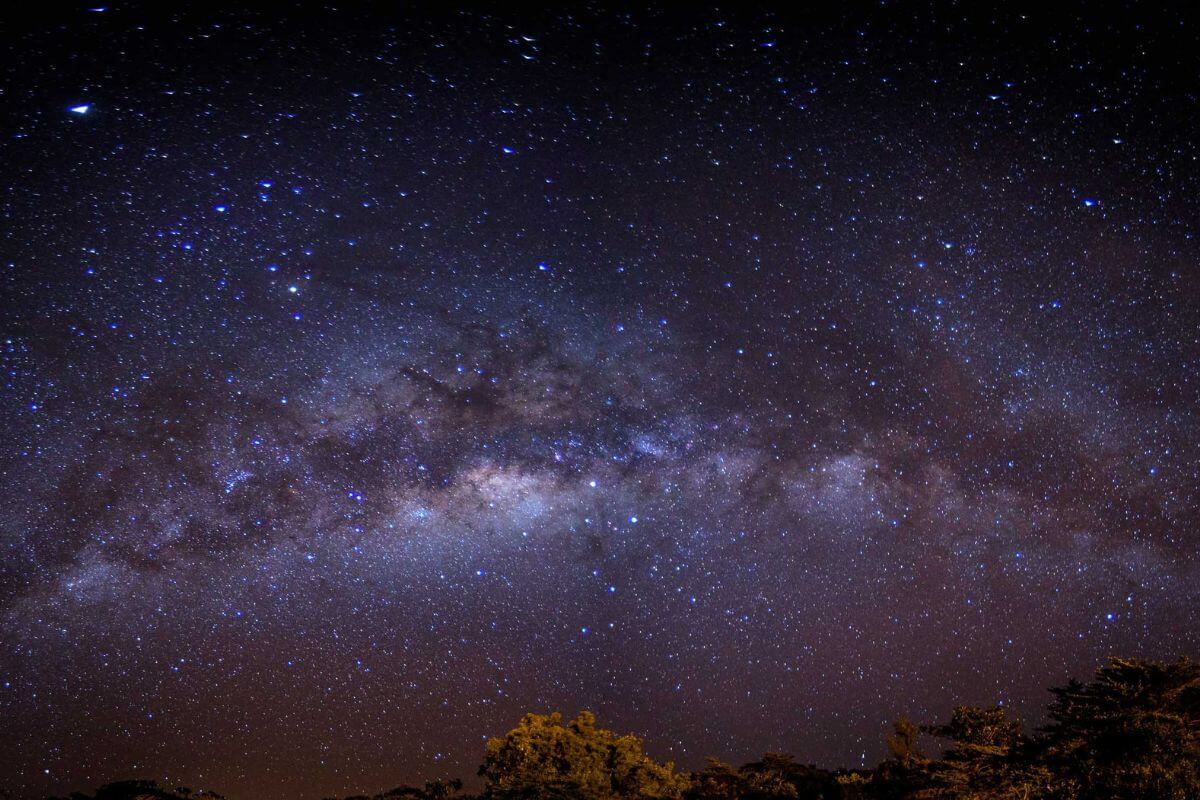
Lost Trail Pass, nestled on the Montana/Idaho border, is an absolute gem for stargazing enthusiasts. Sitting at an elevation of 7,000 feet (2,133.6 m) above sea level, this pass offers a breathtaking, unobstructed view of the starry night sky.
Its high elevation and minimal light pollution make it the perfect spot for setting up telescopes and observing the stars and other celestial phenomena with enhanced clarity and detail.
It’s a must-visit destination for anyone seeking an optimal environment for stargazing, where the beauty of the universe can be truly appreciated.
Lost Trail Pass doesn’t congest; its raw beauty gives us a crystal-clear perception of the infinite.
Whether you’re a novice at identifying constellations or an experienced telescope enthusiast, make sure Lost Trail Pass is a highlight on your Montana travel agenda.
17. Medicine Rocks State Park
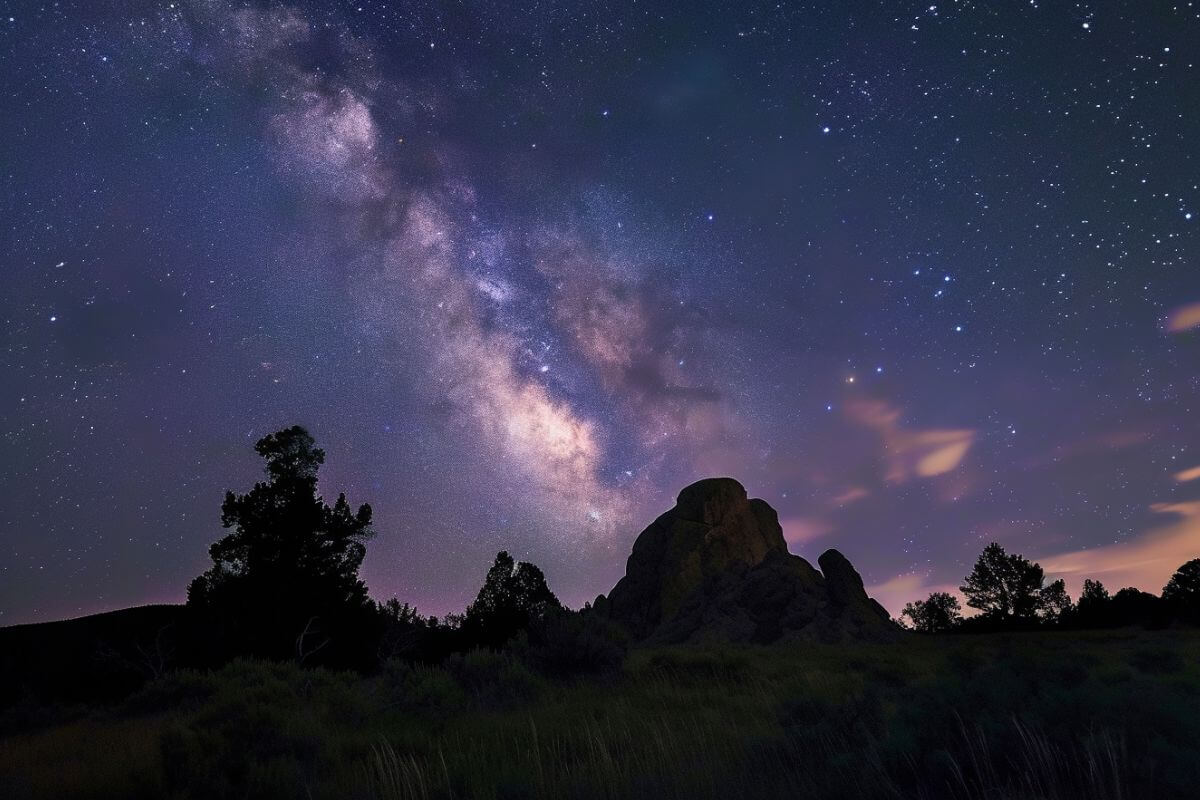
Medicine Rocks State Park If you’re yearning for a celestial treat, head to Medicine Rocks State Park. Renowned for its pristine night sky, it has been designated an International Dark Sky Sanctuary. This is as secluded as it gets – located 25 miles (40 km) west-southwest of Baker, Montana, and 11 (18 km) miles north of Ekalaka.
Quick Snapshot of Medicine Rocks State Park:
- Located 25 miles (40 km) west-southwest of Baker, Montana
- Open year-round
- Day use hours: 7 a.m. – 10 p.m.
- Camping is available
- Water is always available
Practical Tips for Your Visit:
- Bring a good-quality telescope or binoculars to enhance your stargazing experience.
- Carry layers as it can get chilly in the evenings.
- Camping enthusiast? Don’t stress – campsites are available throughout the year, but you might want to make it a first come, first serve kind of mission, especially in the summer.
And the best part? As you’re winding down from a spectacular stargazing evening, you can camp out beneath the same incredible sky. It’s a night of infinite splendor that you’ll remember long after the stars have faded into the morning light.
Montana Night Sky Final Thoughts
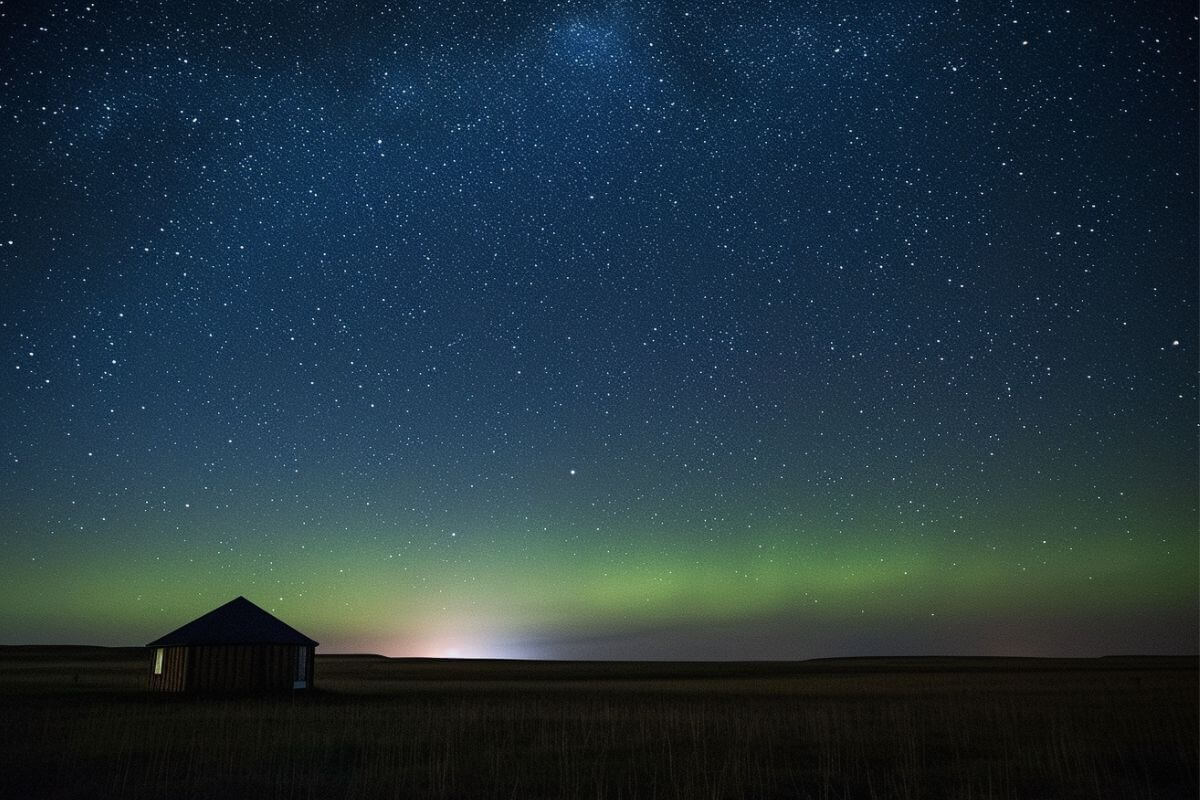
Montana’s night sky offers a unique and unforgettable stargazing experience, drawing both enthusiasts and casual observers to its diverse landscapes. From the serene beauty of Avalanche Lake in Glacier National Park to the tranquil Hyalite Canyon near Bozeman, the state’s varied locales promise celestial wonders.
Glacier National Park’s recognition as an International Dark Sky Park highlights Montana’s commitment to preserving pristine night skies. Notable vantage points like Apgar Lookout and the Dusty Star Dome, along with the educational experiences at the Blue Mountain Observatory, offer engaging opportunities for stargazing.
The enchanting landscapes of Yellowstone National Park become even more magical under a star-studded canvas, while educational stargazing adventures await at the Lewis and Clark Interpretive Center. Unparalleled celestial encounters can be found at destinations like Beartooth Highway and the American Prairie Reserve.
The cultural significance of Pictograph Cave State Park and the panoramic views from Lost Trail Pass add to Montana’s multifaceted allure. Bitterroot Valley’s blend of recreation and stargazing further showcases the state’s unique charm.
The International Dark Sky Sanctuary at Medicine Rocks State Park leaves a lasting impression. Montana’s night sky, beyond its celestial wonders, invites contemplation, turning each visit into an unforgettable journey into the cosmos.
Montana Night Sky FAQs
1. Can You See the Northern Lights in Montana?
Yes, the Northern Lights, also known as the Aurora Borealis, can be visible in Montana, especially in the winter months.
Areas with minimal light pollution, such as Glacier National Park and other remote locations, offer better chances to witness this captivating natural phenomenon.
2. Can You Stargaze in Glacier National Park?
Certainly, Glacier National Park is an excellent destination for stargazing. Recognized as an International Dark Sky Park, the park’s remote location and minimal light pollution provide optimal conditions for observing stars, constellations, and even the Northern Lights during winter.
3. What Is the Best Time to View the Northern Lights in Montana?
The best time to view the Northern Lights in Montana is during the winter months, particularly from late fall to early spring when the nights are longer and darker.
The increased darkness enhances the visibility of the auroras, and Montana’s clear winter skies offer a higher chance of witnessing this captivating natural phenomenon.
For more intriguing insights into the wonders of Montana, check out the articles below:
- https://www.nps.gov/glac/learn/nature/night-sky.htm
- https://www.umt.edu/physics-astronomy/blue-mtn-observatory/
- https://www.fs.usda.gov/recarea/hlcnf/recarea/?recid=61458
- https://www.flickr.com/photos/yellowstonenps/34925019274
- https://commons.wikimedia.org/wiki/File:Observatory_sky_and_stars_%28Unsplash%29.jpg

